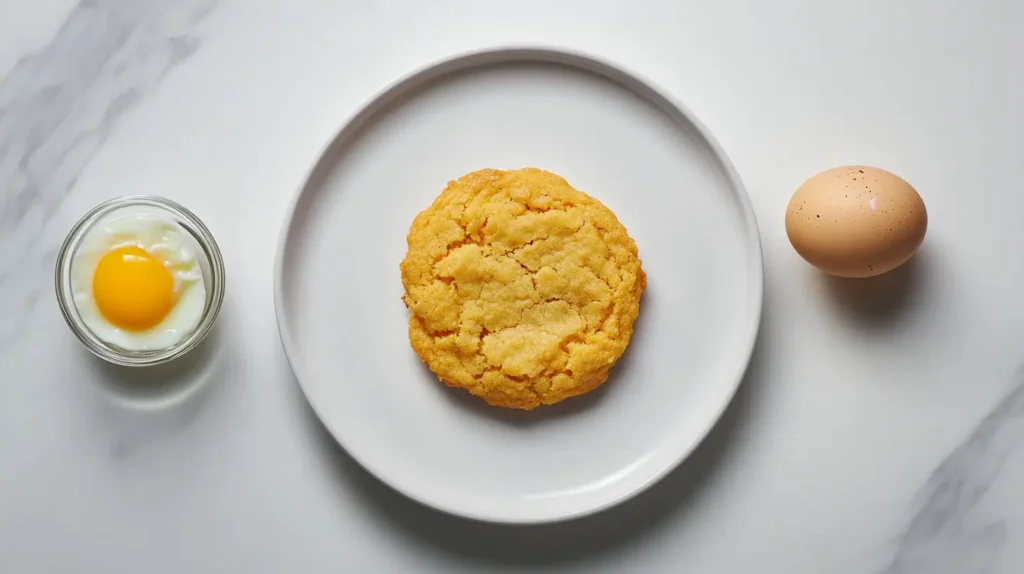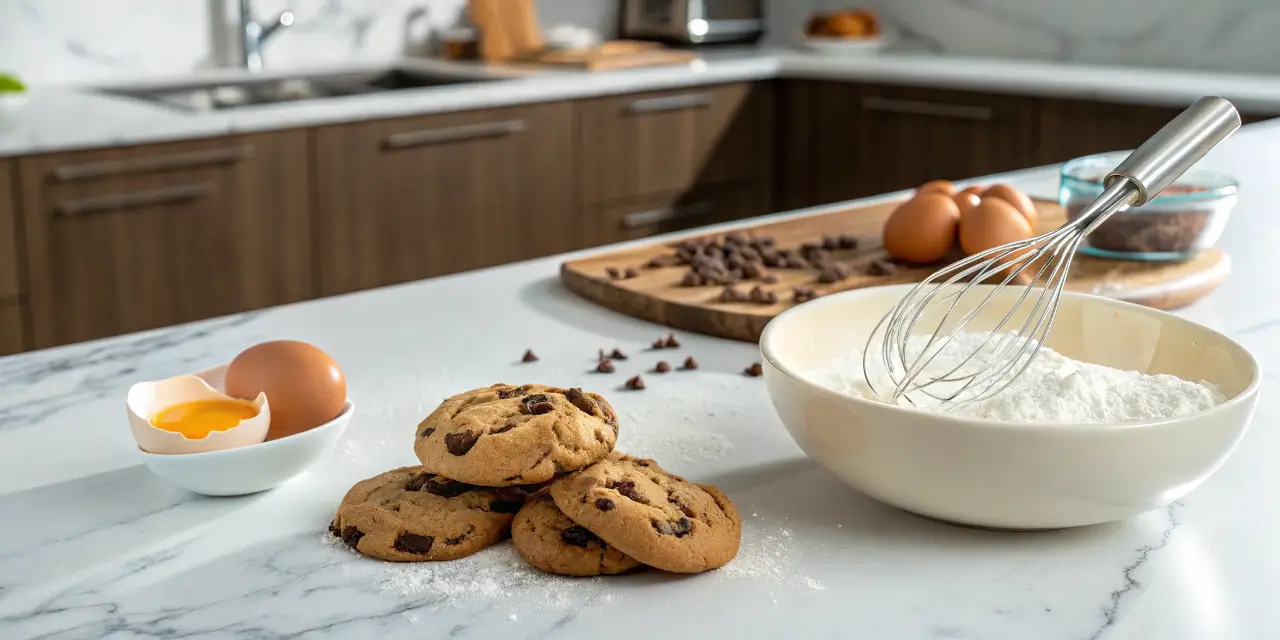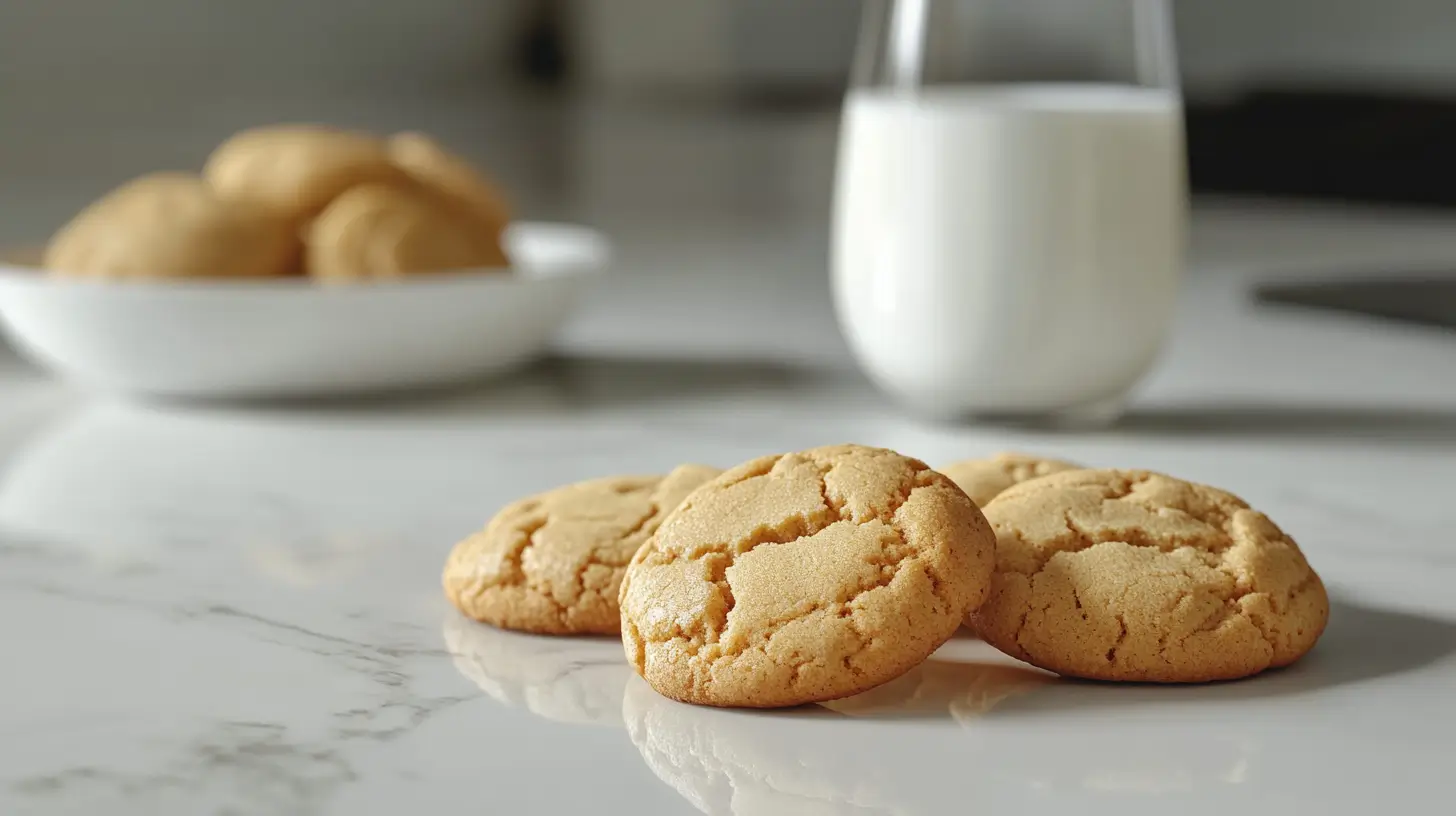Eggs are a fundamental ingredient in baking, but how does the amount of eggs affect cookies? While they may seem like a simple addition, eggs have a significant impact on the outcome of your cookies. From their texture to their flavor, the number of eggs you use can change everything. Whether you’re baking for fun or striving for perfection, understanding the science behind eggs in baking is crucial. This article will explore every aspect of how eggs contribute to your cookies and how to adjust for the best results.
Let’s dive into the fascinating details behind this essential baking component and uncover how varying amounts of eggs can transform your cookies from chewy to crumbly or cakey to crispy.
The Science Behind Eggs in Baking
Eggs are multifunctional in baking, serving as binders, leavening agents, and moisture providers. They help combine the dough, hold ingredients together, and influence how the cookies rise. But how does the amount of eggs affect cookies on a chemical level?
Eggs are rich in protein, which provides structure. When heated, the proteins coagulate, creating firmness. Simultaneously, the fats from the yolks contribute to the richness and tenderness of the cookies. The water content in eggs adds moisture, preventing the cookies from becoming dry.
- Egg yolks: Contain fats and emulsifiers that enhance the richness and softness of cookies.
- Egg whites: Packed with proteins, they contribute to structure and lift.
Understanding these properties allows bakers to manipulate the dough by altering the number of eggs, achieving the desired texture and flavor.
How Eggs Impact Cookie Texture
The amount of eggs in your recipe plays a critical role in determining the texture of your cookies. But how does the amount of eggs affect cookies in this regard? It all boils down to how eggs balance moisture, structure, and fat content.
Adding fewer eggs results in drier, crumblier cookies, while extra eggs lead to a more cake-like texture. Eggs provide moisture, which directly affects softness, while their protein content ensures the dough holds its shape.
Examples of Texture Variations
Here’s how different amounts of eggs influence texture:
- Too few eggs: Cookies become crumbly, dense, and less cohesive.
- Standard amount (1–2 eggs): Achieves a chewy, balanced texture.
- Extra eggs: Produces puffier, more cake-like cookies.
Experimenting with egg quantities helps you identify the perfect balance for your taste preferences.
How Eggs Affect Cookie Flavor
You may not immediately associate eggs with flavor, but their presence subtly enhances the overall taste of your cookies. So, how does the amount of eggs affect cookies in terms of flavor? Eggs contain fats that enrich the dough, contributing to a richer taste. They also interact with sugar during baking to amplify sweetness.
However, adding too many eggs can lead to an “eggy” aftertaste, which may overpower other flavors like vanilla or chocolate. On the other hand, using fewer eggs might result in bland cookies lacking depth. Striking the right balance ensures that the flavor remains harmonious.
The Role of Egg Yolks vs. Egg Whites
Egg yolks and egg whites serve distinct purposes, and understanding their individual contributions is essential. If you’re wondering, how does the amount of eggs affect cookies differently depending on the part used, here’s a breakdown:
- Egg yolks: Their fat content provides richness and enhances softness, resulting in a tender, melt-in-your-mouth cookie.
- Egg whites: The proteins contribute to structure and lightness, helping the cookies rise and hold their shape.
Using only yolks will yield denser, richer cookies, while focusing on whites can create lighter, crispier cookies. You can adjust the yolk-to-white ratio to match your desired texture and flavor.
Effects of Too Few Eggs in Cookies
Baking with fewer eggs than the recipe calls for has a significant impact. But how does the amount of eggs affect cookies when the amount is reduced? Here’s what happens:
- The dough becomes less cohesive due to reduced binding agents.
- Cookies lose their moisture, becoming dry and crumbly.
- The lack of eggs limits rise, resulting in flatter, denser cookies.
When to Use Fewer Eggs
- For crunchy or shortbread-style cookies.
- To reduce richness and highlight other flavors.
If you need to compensate for fewer eggs, consider adding extra liquid, like milk or water, to prevent the dough from becoming overly dry.

Effects of Too Many Eggs in Cookies
What happens if you add extra eggs? How does the amount of eggs affect cookies when there are too many? While eggs provide structure and moisture, an excess can lead to unexpected results.
- Cookies become puffier and more cake-like due to the increased moisture.
- They may develop an overpowering “eggy” flavor.
- The extra liquid content may cause the dough to spread excessively during baking.
When to Use More Eggs
- For softer, thicker, and cake-like cookies.
- To add moisture in recipes with heavy dry ingredients.
When adding extra eggs, balance the dough with additional flour or sugar to maintain the desired texture and flavor.
Practical Tips for Adjusting Egg Amounts in Cookie Recipes
If you want to experiment with egg quantities, keep these tips in mind:
- Start small: Adjust by half an egg if possible, using a whisked egg mixture.
- Use substitutions: Applesauce or mashed bananas can replace eggs for unique flavors.
- Test batches: Bake small portions to determine the ideal balance.
Egg Substitutes in Cookie Baking
For those who avoid eggs due to dietary restrictions or allergies, egg substitutes offer an alternative way to bake delicious cookies. But how does the amount of eggs affect cookies when replaced by substitutes? The results depend on the type of substitute used and its properties.
Common egg substitutes include:
- Flaxseed meal: Combine 1 tablespoon of flaxseed meal with 3 tablespoons of water to replace one egg.
- Applesauce: Use ¼ cup of unsweetened applesauce per egg for added moisture and sweetness.
- Mashed banana: A ripe banana can act as a substitute, creating dense, chewy cookies.
- Commercial egg replacers: These pre-mixed powders work well for binding ingredients in most recipes.
Substitutes lack the structural and emulsifying properties of real eggs, so results may vary. If using substitutes, expect slight differences in texture and flavor while still achieving satisfying cookies.
Egg-Free Cookie Recipes
Creating cookies without eggs is easier than ever. Egg-free recipes rely on alternative ingredients to bind, lift, and moisten the dough. So, how does the amount of eggs affect cookies when eliminated entirely? You’ll often find the cookies are denser or have unique flavors depending on the substitute used.
Popular Egg-Free Recipes:
- Vegan Chocolate Chip Cookies: Use flaxseed meal and plant-based butter for chewy, flavorful cookies.
- Peanut Butter Cookies: Rely on the natural oils and stickiness of peanut butter as a binder.
- Oatmeal Cookies: Combine mashed bananas or applesauce to create moist, egg-free treats.
With careful adjustments, you can achieve egg-free cookies that rival traditional recipes in taste and texture.
How to Adjust Egg Quantity for Specific Cookie Types
Different cookie types require varying amounts of eggs to achieve their signature textures. But how does the amount of eggs affect cookies depending on the type? Let’s explore how to adjust egg quantity for your favorite cookie styles:
- Chewy cookies: Add an extra egg yolk to increase richness and moisture.
- Crispy cookies: Reduce eggs slightly or use only egg whites for a lighter, crunchier result.
- Cake-like cookies: Incorporate an additional whole egg to enhance puffiness and softness.
- Dense, fudgy cookies: Stick to fewer eggs to maintain a thick and compact structure.
By tailoring the egg quantity to the desired cookie style, you can achieve consistent, bakery-quality results every time.
Troubleshooting Egg-Related Cookie Issues
Even seasoned bakers encounter egg-related issues when making cookies. If you’re wondering how does the amount of eggs affect cookies when problems arise, these troubleshooting tips can help:
Common Issues and Fixes:
- Cookies spread too much: Excess eggs or liquid could be the culprit. Add more flour to stabilize the dough.
- Dry, crumbly cookies: A lack of eggs may be the problem. Add an extra egg or increase the liquid content.
- Eggy aftertaste: This occurs when too many eggs are used. Balance the dough with additional sugar or vanilla extract.
- Flat cookies with no rise: Insufficient eggs may cause poor structure. Increase the egg content or mix in egg whites for lift.
Understanding how eggs interact with other ingredients can resolve most cookie dilemmas.
Nutritional Impact of Eggs in Cookies
Eggs contribute not only to a cookie’s structure but also to its nutritional profile. So, how does the amount of eggs affect cookies nutritionally? Eggs are a source of protein, vitamins, and minerals, making them an important ingredient in balanced diets.
Nutritional Contributions of Eggs:
- Protein: Eggs add a small but significant amount of protein to cookies.
- Fats: The yolk provides healthy fats that enhance the texture and richness of cookies.
- Micronutrients: Eggs contain vitamin D, B vitamins, and minerals like selenium and zinc.
Using fewer eggs reduces calorie and fat content, while increasing eggs can boost protein and nutrient density. For a healthier option, consider balancing egg usage with whole-grain flours or natural sweeteners.

Historical and Cultural Significance of Eggs in Baking
Eggs have played a crucial role in baking traditions for centuries, shaping culinary practices worldwide. But how does the amount of eggs affect cookies in a historical context?
Historically, eggs were prized for their ability to bind ingredients and add moisture, especially before modern baking techniques. Many traditional cookie recipes, such as Italian biscotti or French sablés, rely heavily on eggs for their distinctive textures.
In various cultures, eggs also symbolize fertility and prosperity, often featured in celebratory bakes. Understanding this rich history highlights the importance of eggs in creating the cookies we love today.
Experimenting with Eggs: Fun Tests at Home
Curious bakers can conduct experiments to explore how the amount of eggs affects cookies. Testing different egg quantities can lead to fascinating insights and delicious results.
Fun Egg Experiments to Try:
- No eggs vs. one egg: Compare the texture and flavor of cookies with and without eggs.
- Yolks vs. whites: Bake two batches—one using only yolks and the other with only whites. Observe the difference in texture and richness.
- Extra eggs: Add an additional egg to see how it changes puffiness and moisture.
- Half-eggs: Whisk an egg, use half, and compare the results to a full egg batch.
These tests not only improve your baking skills but also deepen your understanding of how eggs influence cookies.
FAQs
What Does Adding More Eggs Do to Cookies?
Adding more eggs to cookie dough increases the moisture content, which results in softer and thicker cookies. Eggs also add structure due to their protein content, giving the cookies more height and a cake-like texture. Additionally, the fats in the yolk contribute to a richer flavor. If you’re looking for cookies with a softer bite or a fluffier texture, increasing the egg content is a great way to achieve those results.
What Happens If You Put Too Many Eggs in Cookie Dough?
If you add too many eggs to cookie dough, the cookies can become overly puffy and cake-like due to the excess moisture and structure provided by the eggs. This can also cause the dough to spread excessively during baking, leading to thinner cookies. Moreover, too many eggs can result in an overpowering “eggy” flavor that may dominate the other flavors in the cookies, such as chocolate or vanilla.
What Happens If You Don’t Have Enough Eggs for Cookies?
Without enough eggs, cookies may turn out dry, crumbly, and prone to falling apart because eggs act as a binder and provide moisture. Additionally, the dough may lack structure, leading to cookies that are flatter and less chewy. To make up for the missing eggs, you can use substitutes like applesauce, mashed bananas, or flaxseed meal to help bind the ingredients and add moisture.
What Is the Secret to Chewy Cookies?
The secret to chewy cookies lies in the right balance of moisture and fat. Adding an extra egg yolk is a great way to achieve chewiness because the yolk increases moisture and richness without adding too much liquid. Additionally, using melted butter instead of softened butter helps create a denser, chewier texture. Ensuring the cookies have enough brown sugar also helps, as brown sugar retains moisture better than white sugar. Finally, slightly underbaking the cookies and allowing them to cool on the tray locks in their soft, chewy texture.
Conclusion
Eggs are far more than just a basic ingredient in cookie recipes—they are a transformative element that dictates the texture, flavor, and structure of every batch. From egg substitutes to troubleshooting and nutritional benefits, understanding how the amount of eggs affects cookies allows bakers to customize their creations with precision.
By experimenting with eggs and exploring their historical significance, you can elevate your baking skills and create cookies that suit any preference or dietary need. Whether you use eggs sparingly or embrace their richness, the possibilities are endless when it comes to mastering the art of cookie baking.





